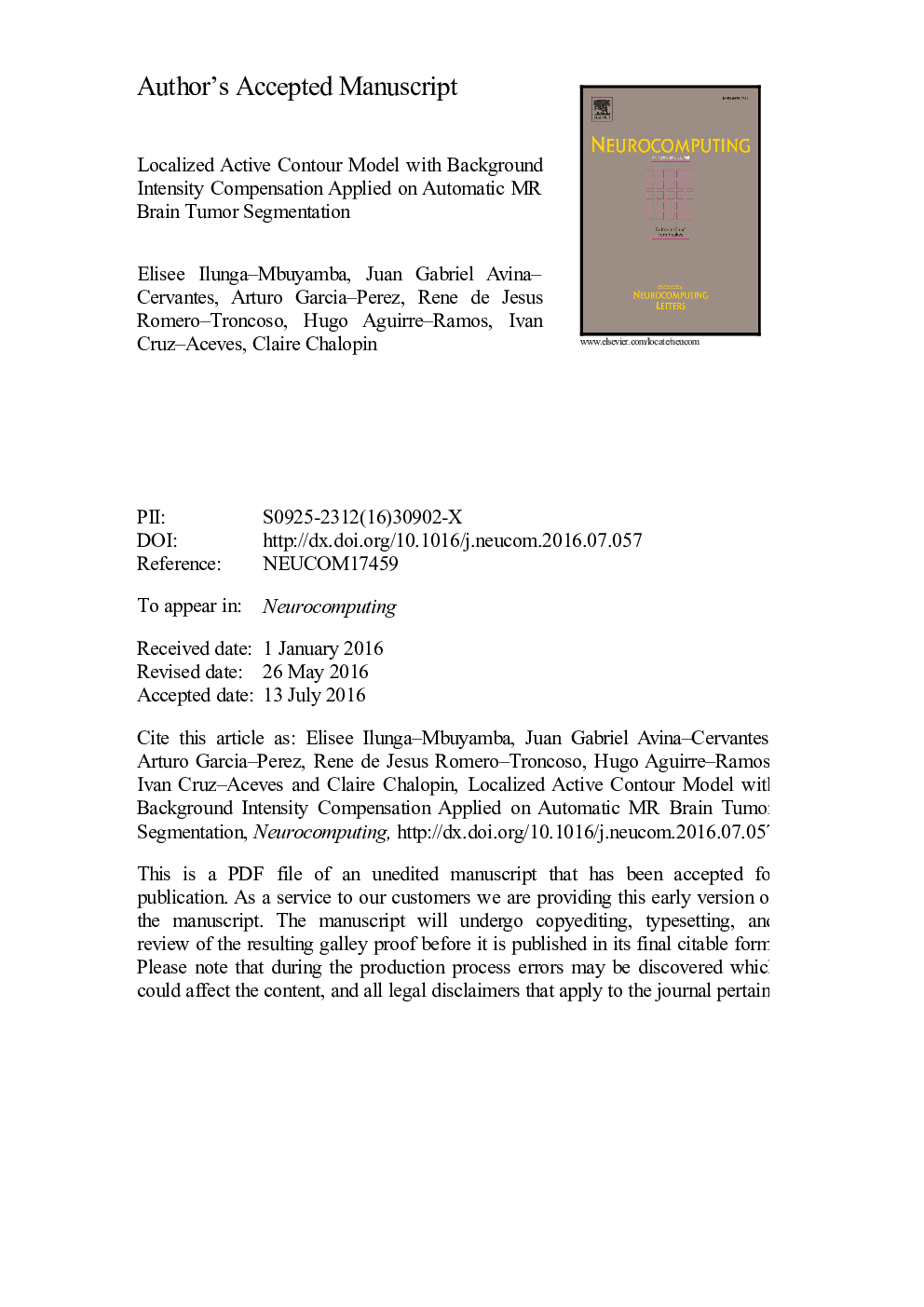| Article ID | Journal | Published Year | Pages | File Type |
|---|---|---|---|---|
| 4948093 | Neurocomputing | 2017 | 22 Pages |
Abstract
This paper presents a Localized Active Contour Model (LACM) integrating an additional step of background intensity compensation. The region-based active contour models that use statistical intensity information are more sensitive to the high mean intensity distance between consecutive regions. In Magnetic Resonance Imaging (MRI) this distance is great between the foreground and the background, hence it leads to an incorrect delineation of the target. In order to resolve this problem, an automatic process is introduced in our model for balancing the mean intensity distance between an image foreground and its background. The aim is to minimize the attraction effect of the active contour model to the undesired borderlines defined by these two mentioned image regions. By using this approach not only the obtained accuracy outperforms the traditional localized mean separation active contour model, but also it reduces the computation time of the segmentation task. In addition, this method was efficiently applied on automatic brain tumor segmentation in multimodal MRI data. The Hierarchical Centroid Shape Descriptor (HCSD) was used for detecting the region of interest i.e. abnormal tissue so as to automatically initialize the active contour. The validation of experiments was carried out on synthetic images and the quantitative evaluation was performed on the BRATS2012 database. Finally, the accuracy achieved by the proposed method was compared to the localized mean separation intensity, the localized Chan-Vese, the local Gaussian distribution fitting and the local binary fitting models by using the Dice coefficient, Sensitivity, Specificity and the Hausdorff distance. The computation time of the methods was also measured for comparison purposes. The obtained results show that the proposed model outperforms the accuracy of the selected state of the art methods. Moreover, it is also faster than the comparative methods in the medical image segmentation task.
Keywords
Related Topics
Physical Sciences and Engineering
Computer Science
Artificial Intelligence
Authors
Elisee Ilunga-Mbuyamba, Juan Gabriel Avina-Cervantes, Arturo Garcia-Perez, Rene de Jesus Romero-Troncoso, Hugo Aguirre-Ramos, Ivan Cruz-Aceves, Claire Chalopin,
